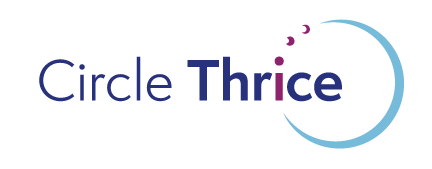In case you missed the first installment of this series, here’s part one.
Agile, as a system, is highly practical. It’s about taking action and getting stuff done. And this isn’t a bad thing! It’s good to have a process that helps you get reach goals in a chaotic environment. But alone, agile is incomplete. It tends to prioritize the lowest level, most granular task accomplishment over detailed long-range plans. In a high-chaos environment, this makes sense. But the trouble is that without a cogent strategy, it’s hard to decide what to focus on.
Those of you who have been following my stuff for a while know that there’s a connection between the highest level goals down to your day to day tasks. In the past, I’ve described this as a ladder. As in, if any rungs on this ladder are missing, you have a gap, which can impact the results you get. But while that’s not necessarily incorrect, I think it’s incomplete and not the best metaphor.
See, the goal isn’t to climb up the latter to the top. Instead the top, which is who you are, needs to flow down to the ground level where your day to day activity is. It’s not a ladder up, but a flow down… yes, it’s a waterfall (this is a PM joke that other PM-types will get — thank you West!).

See, everything starts with the strategy, which for personal project planning, is all about YOU — who you are, how you operate, and what you want to become.
The wellspring is your Mission, which is your core purpose (who you are). You may not know what this is yet (just like the source of a mighty river might be unknown) but it impacts everything you do in your life. If you move in alignment with your mission, you get flourishing flow. Against it; flooding and drought.
If you don’t know your mission, don’t panic! You can discover it the same way they discovered the source of the Amazon, by working your way up to it through the decisions you make. Many people do it this way and yes, it can be the whole course of a lifetime to figure it out. When you choose something for your life that works — that gives you that feeling of being:
- In right relation
- In tune with the universe
- At ease in your environment
Then you have found your way close to your life’s mission. If you want to explore this further, consider crafting a mission statement and trying it on to see how it feels. Mine is “Organizing enchantment at home and in the world.”
Your mission will flow down and manifest in your values. Not to be confused with any one religion’s values, this is what you personally care about. You might value adventure or security, prosperity or simplicity, beauty or utility. If you are living right, you will be operating within your values and trying to manifest them. Note, no one else gets to judge your values. This isn’t the Ms. Universe contest and you don’t have to share your values with anyone. My values include competence, connection, and curiosity (and some others that don’t begin with C). You’re going to be looking at a handful, not dozens. But you should spend time thinking about them because they flow down into the life you want to create for yourself.
This is your vision, which is what you want to move toward in your life. It might be a year out or five, it might be very different from where you are now, or just a refinement of your current situation. But they key is that this vision should be informed by your values. When you have a mismatch, you risk working hard and reaching the wrong goals.
Now, there’s a whole practical process for turning your strategy into doable goals and a defined project, which becomes an agile process for getting shit done. But the thing I want to focus on is that your mission, values, and vision don’t stop at the high level. No, they need to flow all the way down to the day to day choices you make — who you associate with, what you prioritize, where you focus.
This doesn’t mean you aren’t agile! You still want to be able to fail fast, adjust course, and pivot rapidly. But you need to do it within the context of your personal strategy — which is a level higher and more abstract than just your goals or projects. You need to think about the kind of person you want to be and the kind of world you want to create.
This is particularly critical in an environment that seeks to impose value on people rather than letting them decide for themselves what they care about. For example, if you value connection, love, community, etc. then you know that right now there are forces aligned against those values. In some cases those values might not even feel… allowed. But outside opinion doesn’t change who you are and what you value. It shouldn’t change your strategy, even if it changes the goals you can reach and tasks you can do.
Now, there’s plenty of things we do every day that don’t have anything to do with our strategy. I do the dishes because I like a clean kitchen (and love when my husband cooks), but it’s not like a core value to my life or my personal mission to “Clean all the things!” No matter, dishes still gotta get done (chop wood, carry water). But when we can carry our mission, values, and vision with us through the day and through our todo list, we will be:
- Doing things more in line with our strategy
AND - Doing more things in line with our strategy
Which gets us closer to our best life and into that state of flow.


